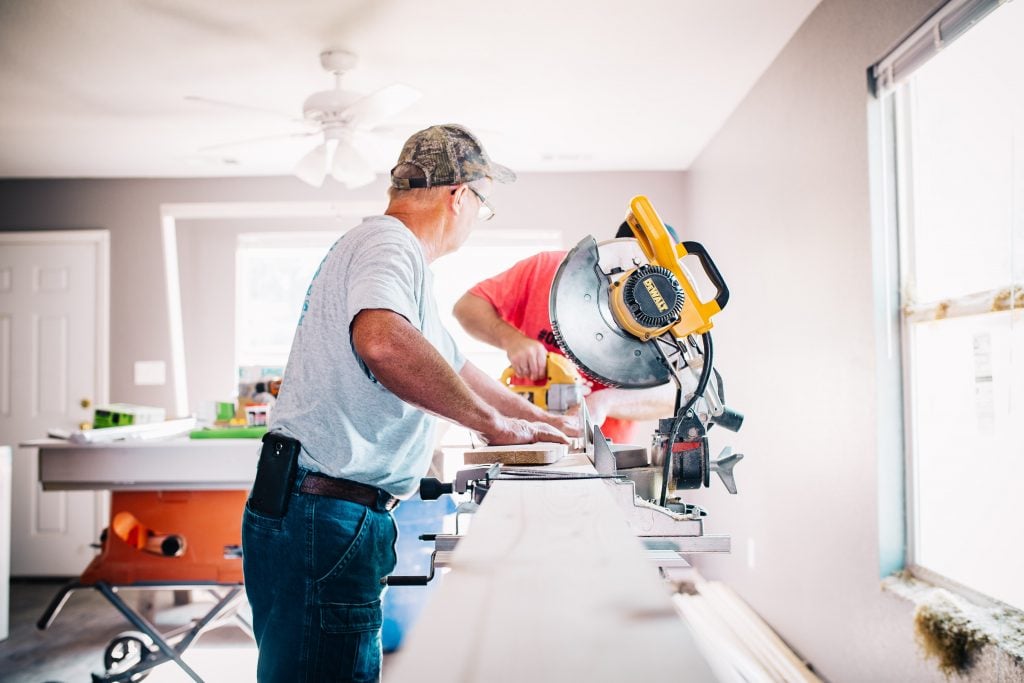Ask Brian is a weekly column by Real Estate Expert Brian Kline. If you have questions on real estate investing, DIY, home buying/selling, or other housing inquiries please email your questions to [email protected].

Question from Jerry in Utah: Hey Brian, I’m a pretty enthusiastic DIY guy. I always have one or two projects going at a time because I live in a 40-year-old house that constantly needs updating (I’ve been here for about 4 years). January is my least favorite time of the year for home projects because I’m always out of cash and mostly stuck indoors. You’re always full of new ideas, what can a broke guy like me be doing around the house this time of the year?
Answer: Happy New Year Jerry. I know the feeling of being stuck indoors in January with the prospect of watching hours of TV instead of doing something productive around the house. But January is the perfect month to boost your DIY spirit without actually spending any money. It’s about using your imagination to plan projects for the rest of the year. Get started by letting your imagination run a little wild. Spend a weekend morning brainstorming some projects without being hindered by nagging details like budgets and time limits. Be creative. Think about adding an addition, a full man cave, a major kitchen remodel, or whatever your dream house needs.
Then take a more practical approach to put everything in perspective. Don’t worry about a budget quite yet but do start prioritizing your list in the order that you’d like to complete it. How you do this is a personal choice. It could be by practical needs or for esthetics. Once you have a short list of five or six projects, consider the time of the year that each can best be accomplished. Think in terms of winter, spring, summer, and fall. One thing to consider at this point is whether the goal of your project is raising the resale value of your home or if you’ll be staying put for years to come? That finalizes your prioritized list with winter being the place to begin more detailed planning.
Next, begin doing some research. So far, this isn’t costing you any money and by thoroughly researching and planning your project, you can maximize your bang for the bucks when you do spend the money. Talk to friends that have tackled a similar project, read a detailed DIY book, or research your specific project online. Learn about any challenges others faced, budgeting issues that surprised them, special tools or equipment needed, and what they would have done differently. Be clear about what you can safely tackle and where you need to bring in a contractor. Don’t try doing something silly like moving a weight-bearing wall if you don’t know exactly what you are doing. This is a good time to ask others for professional references if you need them.
After the research, is the time to start working on your project budget. Start big by pricing the top quality materials that would make this your dream project. You may need to scale back but you’ll have a good idea of how to do this and still have the best results. As always, make sure you have a reserve fund for the unexpected and budget incidentals like eating out or staying in a motel for a few nights.
An important part of the planning and budgeting process is creating a set of blueprints or sketches. This includes a list of materials to create the detailed budget. If your project is several months in the future, you can use the material list to make purchases while sales are happening. From the blueprint, you also create a step-by-step process for the project that determines the order that you’ll need the materials. This is also the time to get professional estimates if you need these.
The last thing to do before picking up a crowbar or hammer is to get organized. Set aside an area to start storing the new materials as you stockpile them. This should be convenient to the work area but not in the middle where it interferes with your work. Your work will be easier by planning for plenty of space. Declutter the work area, plan how to get rid of demolition materials, and where you’ll store appliances, cabinets, or anything else that will be reinstalled later. This is also the time to get any permits that you need.
Jerry, I get that a lot of DIY homeowners would rather jump right into swinging a hammer but ample planning pays big rewards in the end. If you finish all of your planning for the first project and still don’t have the funds to get started, there is a whole year of DIY projects to be planned until you do have the funds. 2020 will be the beginning of a decade of comfortable living with the right planning.
What are your DIY plans for 2020 and beyond? Please leave your comments. Our weekly Ask Brian column welcomes questions from readers of all experience levels with residential real estate. Please email your questions or inquiries to [email protected].
Photo by Annie Gray on Unsplash